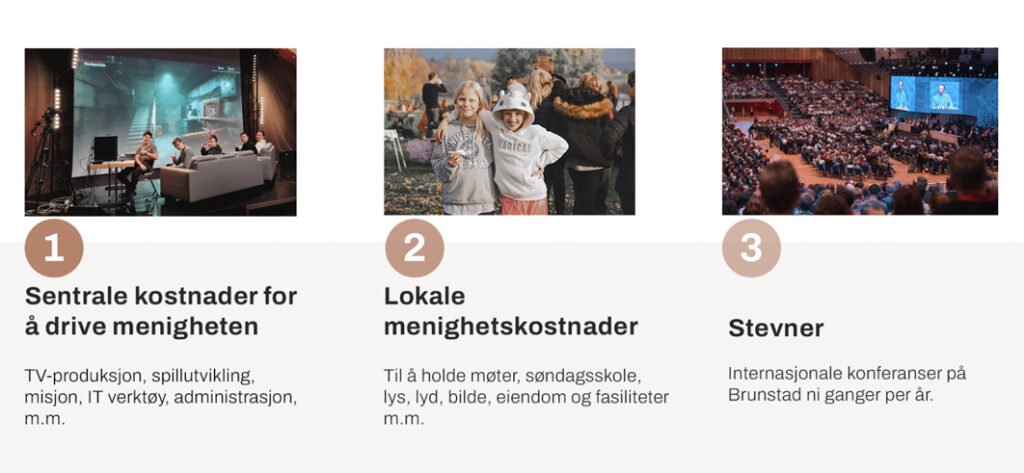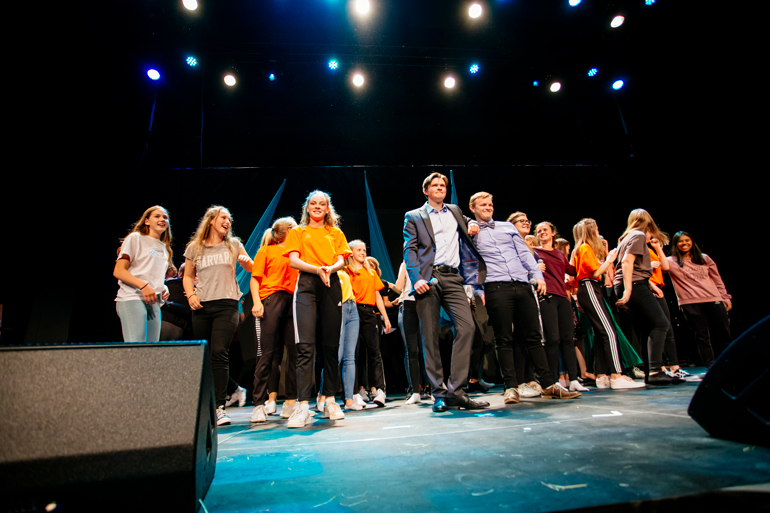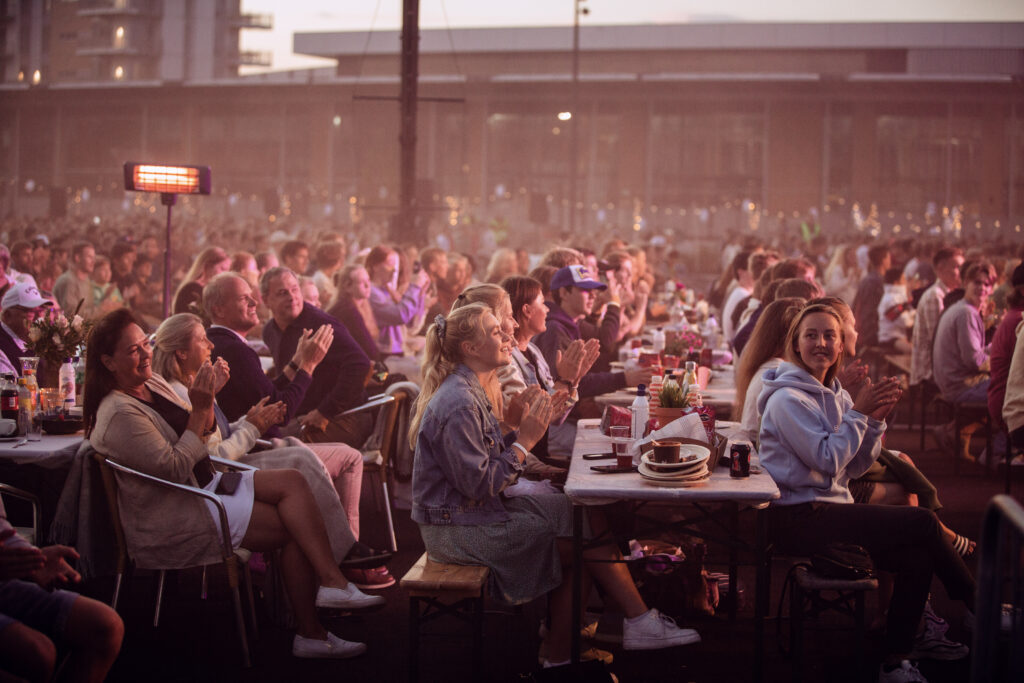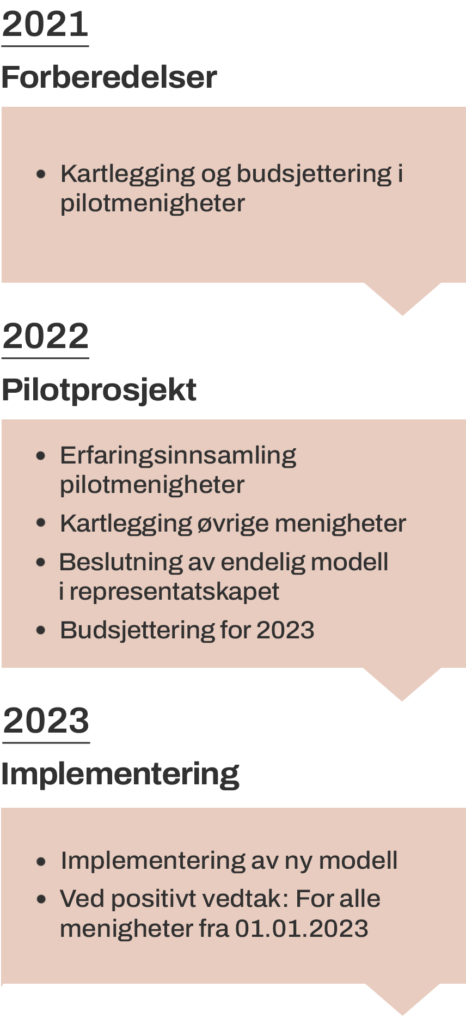Like many other denominations and voluntary organizations, the activities of BCC have always been funded by voluntary donations. Paul writes to the Corinthians “Everyone shall give what he has decided in his heart, not by unwillingness or coercion. For God loves a cheerful giver.”
Congregations affiliated with BCC have worked together in recent decades, resulting in fundraisers that have ensured that we have opportunities and meeting places to gather around the gospel, as well as advanced technology to spread this to the whole world. But the next generation should have the same opportunities, and therefore a sustainable economy is needed for the church both centrally and locally.
This is the case
BCC is now in an exciting period, where we are in the process of organizing ourselves as an international federation. We need funds to carry out our mission and the great commission that Jesus gave us. Therefore, it is natural to take a fresh look at how we can organize the donation process in the best and fairest way for the future.
In working on this, Paul’s words to the Romans have been an inspiration:
“We who are strong must bear the weaknesses of those who are weak, and not just think of ourselves. Each of us must think of his neighbor and do what is best for him, and that which serves to edify.”
Rom. 15: 1-2
This is how it has worked until now
Voluntary giving has always been a basic principle in the regular donation process. In order for the local church to be able to budget and plan its activities, some fixed monthly amounts per household have been recommended.
There are mainly three types of costs:

Up until today, the first two points have been covered by donations based on recommended fixed amounts that have largely been the same for everyone.
However, donors have different financial situations, and have naturally experienced these recommended amounts quite differently. It has therefore always been important for BCC to focus on the contribution being voluntary, and that a person can choose to give more or give less, according to what they are capable of.
But what exactly is a fair donation model?
In 2021, an extensive effort was initiated with analyses and studies for a more sustainable model for the regular donation process. The model has, to a greater extent, taken into account that the members have different financial situations. Not to provide greater income to the church, but to distribute the current level more fairly according to the financial means of the individual.
The Bible says a lot about giving, and that we should be righteous in all things. However, there may be different opinions about what is righteous:
Is it righteous that I should give the same amount of money as what the others give, should I adjust how much I give according to how much I myself partake in the church’s activities, or should I give based on my ability? Or should I give based on my means?
In a project that is now being tested in three Norwegian congregations, we have tried to align the model more clearly in the latter direction, namely that each one is encouraged to give according to their ability.


New model being tested
Before the model is approved and introduced in the entire church, it will be tested in three Norwegian local congregations in 2022.
Local congregations encourage their members to make a donation that they themselves calculate, based on a percentage of their gross income. This way, everyone can contribute according to their actual ability, and the local church gains predictability for covering budgeted expenses, which are decided by the members during their annual meetings.
Once the percentage has been calculated, the members are presented with the budget at the annual meeting. The way to contribute is by signing a letter of intent with the donation amount one wants to give, for one year at a time. Instead of recommending a fixed amount, the church recommends a suggested percentage rate.
Participation in BCC conferences
As mentioned, the regular donations have previously covered local and central costs. In addition, the three pilot churches have chosen to include conference participation for their members as part of the local congregation’s budget.
By contributing your percentage, you ensure that everyone can afford to attend the conference, and the full conference program, including meals, will then be something the local congregation experiences together.

Test period for one year
When the pilot churches had calculated all local costs, coverage of central costs, plus participation in conferences, the recommended percentage ended at the following rates:
BCC Drammen Sande: 10%
BCC Oslo Follo: 9%
BCC Molde: 8% (did not include savings for future expansion of their facilities in their 2022 calculation.)
Example from Oslo Follo
This app gives members insight into the budget process. Budgeted costs are shown in the red column, while the green column shows how much the members have actually pledged in donations. In this way, the members can follow whether the budget was met and influence the result themselves.
Click to see what the different parts of the budget will be used for.
What happens in the future?
The experiences from the test project now form the basis for the final model which is to be decided upon in this summer’s meeting of the Assembly of Representatives. It will then be recommended to all congregations starting in 2023. This is what the process looks like:

Here are some questions and answers that have arisen in the process:
Will it be more expensive to participate in church activities and events with this model?
- I No, not in principle. The reason for the change is not to increase costs or revenues, but to redistribute them more fairly and sustainably.
- Many European congregations will probably include conference costs in the percentage, and travel to and experience conferences together. The congregations that do this will pay more locally than they have done in the past.
- The model also stipulates that young people under the age of 26 do not contribute with donations to the local congregation to cover local and central costs. They are encouraged to participate in youth work and projects that are relevant to their age group. Members over the age of 26 thus cover costs for children and young people when contributing their percentage amount.
What is included in the model, and what is not included?
- In the pilot congregations, they have included this:
- Meetings, Sunday school, youth meetings and other gatherings, as well as other activities for running the local church
- Savings or building funds for the local church (Included by Oslo Follo and Drammen Sande, not included by Molde for 2022)
- Contribution to BCC’s central activities and access to services such as member apps, Brunstad TV, literature website, etc.
- Participation in all BCC conferences including full board
- Not included:
- Collections at the conferences, as well as two annual collections for the mission work
- Accommodation in connection with conferences
- Participation and activities in the children’s and youth associations
Will my donation be affected if I cannot attend all conferences?
- You only sign up for the number of conferences you intend to attend for the coming year, and this affects the local church’s total costs.
- Basically, it does not affect my recommended donation percentage to cover the costs.
Is the gift binding?
Yes, once you have signed the letter of intent and reported it to the local church, the donation is considered binding, and part of the church’s budgeted income.
Does everyone have to contribute?
All members are encouraged to contribute according to their means, it being righteous to help cover the joint costs for activities one participates in.
How can I know that the information about my income remains anonymous when I participate in the income survey?
- The system that maps income is 100% anonymous, and those who work with finances in the local church don’t know what the individuals have reported as income.
This is the Magazine
The Magazine contains monthly information to fellow believers worldwide, where the latest news about central projects in BCC is disseminated through various channels: Here, the latest news about key projects in BCC is communicated via various channels:
- The TV programconveys news, vision and information about central projects, finances and organization. The program is to inform the audience as well as stir up their enthusiasm.
- The podcastdelves into important topics, and has guests who are active and take responsibility in the church’s work. The name “Motivator pod” is a pointer that all listeners who are driven and motivated by the Holy Spirit should be inspired to help build the church further into the future.
- Website articles explain the topics more thoroughly, and should give readers answers to questions they may have regarding these.

